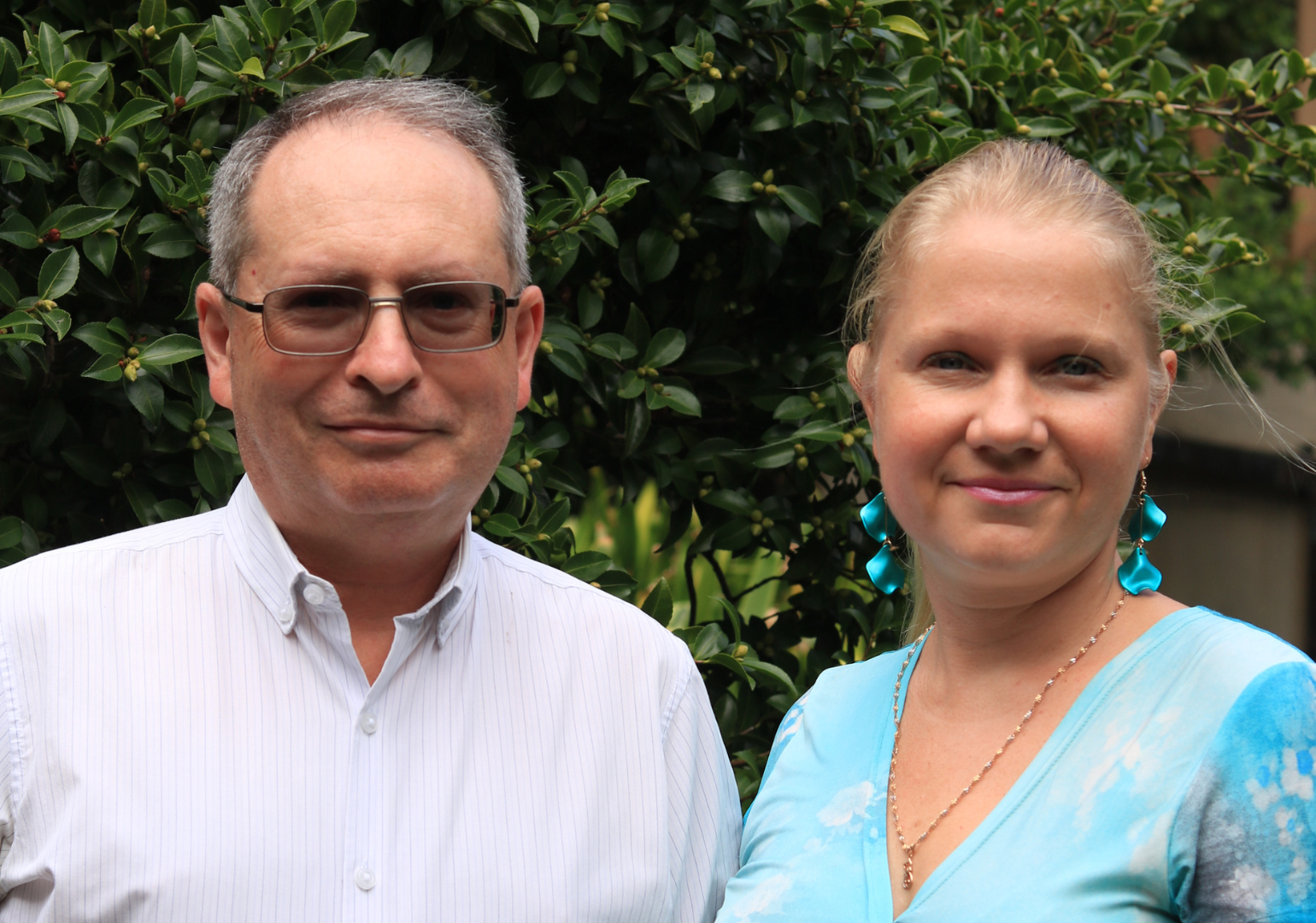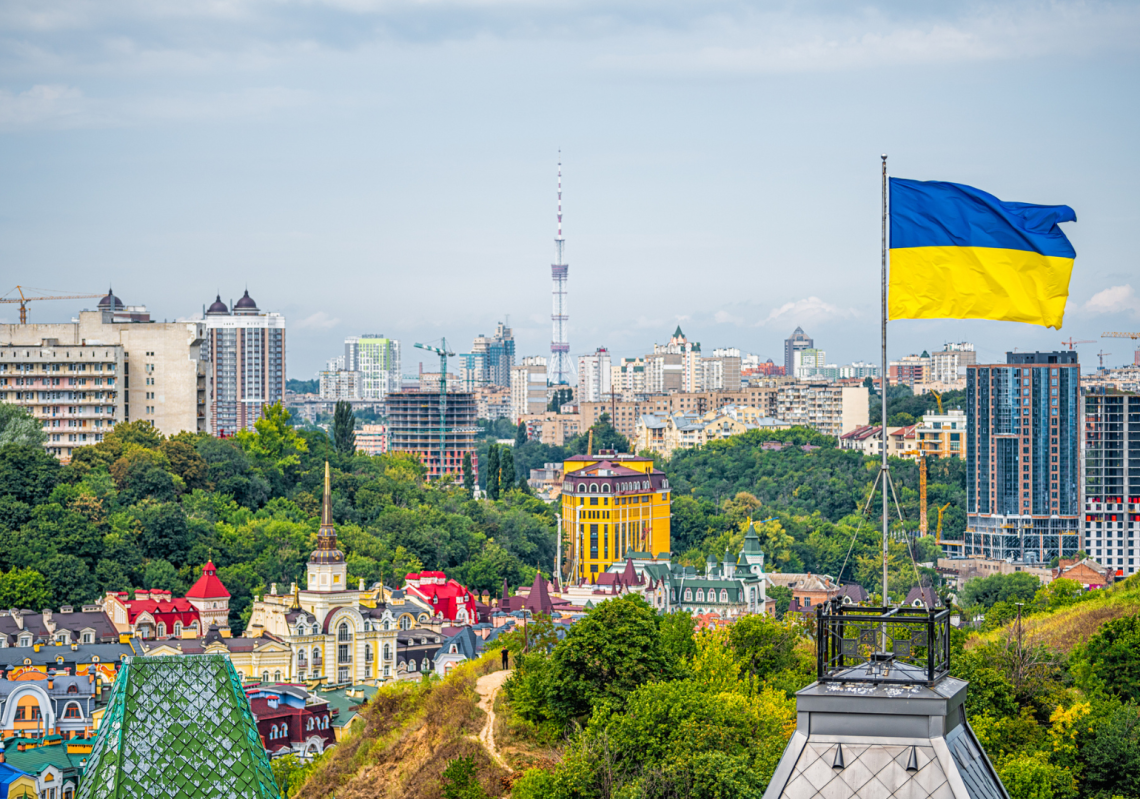Professors Nataliia Kuznietsova and Mikhail Prokopenko share the impacts of their collaborative energy research and their vision for a sustainable post-war Ukraine.
Professors Nataliia Kuznietsova and Mikhail Prokopenko formed a quick connection after discovering their shared passion for Ukraine’s sustainable development in the aftermath of conflict.
It was during a late-night scrolling session at her home in Kyiv that Kuznietsova first came across the Australian Academy of Science’s Ukrainian-Australia Research Fund, a program offering a secure and supportive environment for Ukrainian researchers to continue their work amid the challenges of conflict.
Her research, developed alongside Prokopenko, has dominoed from there.
Born of necessity
Since the beginning of the war in 2022, approximately 20 per cent of Ukraine’s solar power and 80 per cent of its wind power stations have been demolished, either partially or completely, or now sit in Russian-occupied territory.
“Before the war, Ukraine was optimistic about its adoption of green finance as a tool for propelling green energy,” Prokopenko told create.
“The war – and I am talking about the full-scale war which has continued for the last two years – has changed the energy landscape in Ukraine quite dramatically.”

Kuznietsova added that, prior to the conflict, “Ukraine held a strong place in the sustainability market, with many households investing in green energy”.
The conflict has put a pause on these developments, with the rebuilding and safeguarding of vital infrastructure taking priority.
During the first winter of the war, Russia began to target the grid, inflicting widespread damage. In the second winter, however, they did not achieve many of their objectives, explained Prokopenko.
“Ukraine has adapted to prevent a repeat of the first year. There were innovations in the distribution of the energy – many residential and business buildings have switched to power generators and, as a result, energy has been largely decentralised.
“Nobody knows where the Russians will hit, so the challenge is to decipher how to deal with energy distribution under this extreme uncertainty.”
Kuznietsova believes that innovation and adaptation are qualities embedded in Ukrainian people.
“Ukrainians are independent; they are used to solving their own problems so during the winter months, they collaborate with each other to share and produce their own energy.”
Unbreakable spirit
Kuznietsova highlighted the challenges faced by Ukrainians, particularly during winter months when temperatures plummet to below –20°C.
“The government started regulating energy limits so each house has a guaranteed slot of power – around two hours – each day.”
To tackle this, “centres were established where people have access to amenities, power, heating and internet,” she explained.
“I was really impressed by how this initiative spread throughout Ukraine,” Prokopenko added. “I witnessed decentralisation in action at the mass scale; to see that unfolding in front of your eyes in a matter of weeks is really quite striking.
“The power of decentralisation is something that the Russians did not consider because their command is very centralised; they could not imagine how Ukraine would reinvent and reconfigure itself under this new threat.”
Agent-based modelling
Prokopenko and Kuznietsova’s research is guided by one central question: How can decentralisation be used in the transition to green energy?
“How do we incentivise people to switch to green energy?” Prokopenko said. “It may not always be economically viable, so in what optimal way can we incentivise this market?
“There are many financial instruments but no magical formula, so we need to simulate it under different uncertainties.”
These key challenges have underpinned their research during Kuznietsova’s recent six-week visit to Australia.
These key challenges have underpinned their research during Kuznietsova’s recent six-week visit to Australia.
“I have been working with agent-based modelling (ABM) for many years and applied it to different contexts,” he said.
“In essence, you try to break down big environmental interactions – this could be financial environments like the real estate housing market or the spread of infections like COVID-19.”
Prokopenko shared an example of his previous work modelling the COVID-19 pandemic, in which each ‘agent’ represents a person. Data from the Australian census was used to examine factors such as workplace locations, commuting patterns and school attendance.
By simulating every day of the pandemic for six months, researchers were able to estimate how quickly the virus might spread.
“We are able to create a ‘what if’ scenario,” he said. “We can then estimate what will happen, for example, if we increase the level of social distancing.”
The same method is used for green energy.
“Companies might trade carbon emissions. If they have limits on how much non-renewable energy is produced, there may be penalties, so under the emission trading scheme they can offset this penalty by investing in renewable energy or selling excess pollution credits to other companies.
“ABM can be used to approach questions such as: How do you incentivise companies to invest in green energy?”
War in a changing climate
Ukraine is faced with the unique challenge of balancing the need for green energy and the need for immediate infrastructure post-war.
Kuznietsova and Prokopenko suggest a two-pronged solution.
“Russia is destroying civil buildings,” Kuznietsova stressed. “Instead of rebuilding them to their previous form, we propose another approach – the use of green materials and systems.
“We want to provide a clear and transparent methodology for all countries who wish to participate in the rebuilding of Ukraine, pinpointing how they can invest their money and what the outcome will be – safe shelters, green energy and so forth.”
Prokopenko emphasised that the rebuilding will be “huge”.
“The damage that has been inflicted on Ukraine by Russia has already exceeded half a trillion dollars … The task is monumental. If the grid is already semi-destroyed, there is no point in building it to the previous state and then later upgrading it for green energy. Leapfrogging that stage would be quite efficient.
“And yet there are immediate needs for critical infrastructure – the switch can not be made in one go.
“There are tensions because Ukraine still asks for coal to make certain things operational and functional, and yet it’s thinking about transitioning to green energy.”
A vision for the future
So how does Ukraine design strategies to integrate current energy distribution and transmission methods with the shift towards sustainable energy sources?
“The vision is that Ukraine will be able to take on intermediate steps and end up with a significant restructure,” Prokopenko said. “We’re hoping for a lot of green investment.
“Ukraine will become a kind of test bed for rebuilding a whole economy in this new way. During the war there has to be a patch-up procedure, but once it has finished, investors can jump into implementing green energy.”
Prokopenko articulated their vision for a new grid, one made up of solar, hydro and nuclear energy.
“Ukraine still has quite a lot of nuclear stations. It is a challenging one, especially if you look to Germany who closed all of their nuclear stations, but it may still be a reliable solution.
“Ukraine has had its own experiences dealing with Chernobyl and there have been many lessons learnt from that. Building a new grid which combines solar, hydro and nuclear energy is quite unique.
“I expect Ukraine to become quite a hub in terms of innovation in the space of clean energy, and green finance is the engine which will make it all happen.”
Kuznietsova concluded on an hopeful note.
“I am an optimist – I hope that our research offers tangible results and [people] will see just how green and beautiful Ukraine is.”



